The following text is an interview with Lama Ole Nydahl made by Artur Przybyslawski in the bus from Katowice to Warsaw on 15th of April 2003. It forms the introduction to the Polish edition of Divine Madman. The Sublime Life and Songs of Drukpa Kunley, “Szalony Jogin Drukpa Kunlej“. Enjoy!
Q: What really is crazy wisdom and what is its place in Buddhism?
What became known as “Crazy Wisdom” in America during the seventies appeared in the static and highly bourgeois societies of Asia. Here, spiritual teachers sometimes sought methods to shock their students out of their fixed cultural and psychological patterns and to force them to face unusual situations. This could be very effective when the bond between teacher and student held and the background was supportive. In Tibetan Buddhism, great accomplishers like Drukpa Kunley and other Lamas brought their students into situations which dissolved their habitual worlds and opened up new aspects of their inborn potential. Very often the vehicle meant breaking the many physical taboos in Asian cultures.
They indeed have many taboos, and sometimes by forcing their students to strip, behave foolishly in public or get into wild situations, teachers of so-called crazy wisdom could actually give some people a test of their essential freedom. The shock of being in a new situation where they couldn’t rely on their traditions was intense, and having to trust human values like friendship and confidence in the group or ultimately space itself was character-forming. But there were also cases where it went completely wrong because concepts outran compassion and insight.
This also happened in the West. A standard example was the organization of Trungpa Tulku. When he came to England in the late seventies and then fled on to America, he was the holder of such a shock-therapy lineage to confront people with unexpected situations. However, this was not very impressive to a generation of hippies who were already far gone. He mainly managed to make these people stop taking drugs and become overweight drunks instead. In a known case of using his methods, he badly disturbed some Asians. An unpleasant scandal appeared in Harper’s Bazaar magazine about a ceremony he guided where all were sitting naked like at a ritual court. An Asian couple visited, and was shocked. The real drama happened however, when he insisted they had now entered the powerfield and must also undress. Scared, they ran upstairs and locked themselves in a room. Visibly drunk but with the valid motivation that a magic circle – mandala – must not be broken, Trungpa Tulku sent some people upstairs who crushed the door. They took the couple downstairs and forced them to undress like everybody else. As this became public, Buddhism lost standing among some puritanical Americans and many Asians.
The stiffer a society is, the more meaningful shock-like methods become, and the more permissively people live, the less important a breaking of hardly existing taboos will be. In Tibet, the accomplishers – yogis – often would not cut their hair or nails, and wore white robes in order to be recognizable and find supporters. This was also because the red lobby – the monks and nuns – was so massive and took nearly everything. But today social states support all equally and at any rock concert, one may see any amount of long hair. Some people who believe Haile Selassie of Ethiopia was Jesus don’t even comb theirs and all kinds of other exotic things constantly pop up. For all these reasons, extreme outer styles of dress and behaviour have little meaning in the West but in the much more traditional Eastern societies, they may produce quite strong reactions.
Q: What can a contemporary Buddhist learn from Drukpa Kunley?
It depends on what instances you take from his life. The Tibetan who translated his book, brought the manuscript to Hannah and me, asking which stories to include. Afterwards a friend of ours from the Eastern Himalayas in the early seventies, Keith Dowman, took over the manuscript but apparently not to the complete satisfaction of the Tibetan, as we heard.
Anyway at that time, the tales that seemed especially educational to people concerned seeing the sexual encounters of Drukpa Kunley on a pure level. It is of course always wonderful when people can use the powerful force of physical attraction to share joy without tightness and as a gift for others. But there were several other frame-giving stories among his translations, here a well-known rustic one, which I would have included: Once Drukpa Kunley came to a valley where they had not had any rain for a long time. Therefore, they also had no food and many were hungry. Entering the marketplace, he stood on his head, placed a vast funnel in his behind and declared that everybody should pour their tsampa – their staple diet of barley flour – into it. Apparently his digestion was excellent, because with great force he shot the powder up in the air. Shortly after, those with full confidence who had ventured everything had rain on all of their fields and their harvest was immediate. The people who had resisted half of their provisions received rain on half of their fields, and the ones without confidence and investment had no rain.
My idea, which somebody may hopefully find the time to examine one day, is that Drukpa Kunley is a pre-Buddhist fertility god who survived – like pre-Christian Robin Hood. People in cold countries like Bhutan tell many and long stories as they sit cosily together in the hay against the cold, and having a recognized trade-mark name to hang them on to gives weight. So there are a lot of stories, and as inspiring situations happen in close situations, some of them are very good.
Contemporary western Buddhists may here learn to see bodily exchange as a bridge. That nobody can own anybody else but that we may share exciting bits of the way with them: that physical love can become an important gift that gives people self-confidence and joy and also makes them realize that they should give happiness to others. The whole subject of attraction provides an essential bond between people.
On the other hand, there are aspects of his work with sexuality the modern world would consider short-sighted. Though he returned to some of his women, some seem to have been left alone and apparently suffered some psychological troubles. His initial impact was apparently always excellent, but one might say that his service and maintenance were somewhat lacking. Modern lovers, modern Diamond Way students of mine who believe in sharing happiness both day and night, definitely think more of the service factor, also because women usually don’t have the greatest experiences on the first nights. They share these to “be relevant” to the market, and later, when they know the men, they have their best joys. They need closeness and confidence while male sexuality is more like a conquest.
Q: What was the relation between Drukpa Kunley and Karmapa? In the book they are described as equal in realization, but Karmapa seems not to be so wildly free as Drukpa Kunley. And Tsurphu has a very bad name in this book as a place of “eight bad signs” that Kunley sings about, a place where monks are drunk.
Actually, it is Karmapa who compares their attainments. We don’t hear anything from Drukpa Kunley on that subject, and as the Tibetans say: You can not see a higher peak from a lower one. What we learn above all is that Drukpa Kunley didn’t like Tsurphu monastery in south-central Tibet, and also Hannah and I mainly liked it for its history. It has recently been made even more unattractive through some most ugly statues and today is a terrible place! It remains a historical weakness of the Karma Kagyu lineage that we devotedly make our centres where somebody famous meditated. But of course the places people go to do that are chosen because they are so difficult and far away that nobody will come or disturb. And then afterwards our Karma Kagyu school built its main centres at the end of bleak valleys with black dogs running around and near fields where they carve up the dead. Though these are excellent places to find solitude when meditating, they are not the sites for centres of communication. Here the Gelugpas were much smarter. They first looked where the trade-routes were, where the money-people went and where the army encampments lay, and then they built monasteries there to catch that energy. That is surely one of the reasons the Gelugpas are the state church in Tibet today and not us Kagyus or other lineages who were too other-worldly to go straight for the sources of power. We said “Oh! He meditated and got enlightened here, let’s do the same”, while wiser people quickly noticed that most people in monasteries don’t meditate much anyway. They do administrative work, learn, produce things, lend money or get it back. They print books or whatever else one may do at such a place. Thus, the smart people put their monasteries in practical places.
So the 8th Karmapa praised Drukpa Kunley and this is to be expected. No Karmapa – as far as I know – ever made others look stupid. So when a guest comes, they will tell all the good things about him that they possibly can. Also, stating that Drukpa Kunley was ahead of himself in the freedom of expression was self-evident because Karmapa was a monk. There were Karmapas who were not monks, however, like the 15th. He had 12 incarnate children and several fine women, maybe not 5,000 but surely a representative handful. Though he had offspring, Drukpa Kunley’s lovemaking reads most like a ritual act of blessing the women, while the 15th Karmapa seems to have consciously provided bodies for important new incarnations. Their ways and goals were thus quite different.
Also the 16th Karmapa always put others above himself. It is a clear sign that one doesn’t need to prove anything if one naturally praises others.
To whoever is not receptive to what is left from 850 years of meditation, as mentioned, Tsurphu is not attractive. We were up there in 1986 twice. The first time I saw the local protector, a black dog, and on the second visit we brought about 50 of my students to work there. They were mainly from Northern and Central Europe, tough people, and we built up the site for a month, carrying stones and wood among the ruins for new raw structures at an altitude of 4,2 kilometres. This was probably the only time in history that Tibet had help like that. Otherwise only few people go there at all, and today the inhabitants of Tsurphu valley seem to have no interest in what is going on at the monastery. Drukpa Kunley also remarks that some of the monks there are alcoholised, which is a general observation in much of central Asia and the Himalayas also today. Actually those Westerners who join at a mature age and bring the physical and mental conditions for putting up with monastic restrictions usually remain far more disciplined than many Easterners who didn’t choose celibacy and sobriety themselves. In Tibetan culture, if the family had too many children and lacked adequate land, they placed a boy in the monastery. It was a well-respected way to gain influence. Also, when lamas wanted the support of an important family, they would conveniently “discover” a tulku among their children. This was an honour to the whole clan, and they then had to help that lama. Exactly this is what Situ Rinpoche practiced very widely at the outset of this Karmapa controversy – together with the statements by the Dalai Lama – and the reason that much of the Himalayas still support him.
Q: Are there any other famous examples of crazy wisdom in the Kagyu lineage and other lineages?
There are not many publicly quoted examples in the East, which is usually supported by the free overseas Chinese. For that reason, the events have to be proper. Especially the Nyingma and Karma Kagyu lineages, however, which are very individualistic, have a few juicy stories circulating among friends. Actually, in the highest view, sexuality is not just a source of joy but also carries blessing. For instance, the inspiration from having women is necessary to find and take out the secret teachings called termas, which were hidden by Guru Rinpoche between the years 746 and 800. Also the highest class of Buddhas, the Maha Anuttarayoga Tantra aspects are all in union. In the lower tantras, the Kryia-, Charya- and Yoga Tantras, however, the forms are single. Without the coming together of the male and female, ultimate realization must find less direct ways. As could be expected, the level of highest sensitivity is very much a woman’s thing; a Dakini’s, a Khandro’s thing. They inspire the men, bless them, improve their meditation and then often leave them to inspire somebody else. There are maybe not as many known female yoginis, but they were surely impressive.
Q: Is the tradition of crazy wisdom still alive?
Yes, I think that several of my students are its healthy continuation today, and above all the functioning of our Diamond Way groups. Examining one’s mind in the free fall when parachuting, as many of us do already, driving motorcycles or cars at unusual speeds down curvy roads and working or partying all night, going beyond most limits, means sharing the transcendence which crazy wisdom is really all about.
I would say that my Diamond Way students are lay Buddhist when they do intelligent work and earn money. Their view, however, both in daily life and when moving from one course to another during holidays, is different. When they practice and keep their style in all kinds of situations they are yogis. The Chinese have trouble understanding that and they therefore habitually underestimate us. Their Buddhist culture only knows monks and lay people, and here traditionally the monks are on top. So they are most surprised that a European can guide more students than probably any monastic Lama, that our work grows so amazingly. Due to this misunderstanding recently one Taoist master tried to take over an important Diamond Way centre in Germany, but in spite of help of some locals, he only managed to destabilize it. The blessing of the Karmapas again proved unbreakable. Karmapa certainly estimated that we would be around for a while. He gave Hannah and me the Western world, minus France, and also responsibility for lay Buddhism. To Gendun Rinpoche he gave France and the monasteries there, which he built and handled excellently. If one can speak of any hierarchy in the Diamond Way, we surely have the yogis on top. Their focus is vision and realization, and when these function, all other good things come by themselves.
We are thus both beyond and in the world.
Q: Isn’t the crazy yogic style an exaggeration or going too far in the time of our crazy modern world?
Whatever we call it, excitement is the way of living for some people. Just look at the world of extreme sports. However, things should always be in good taste. The strength of Buddha’s teaching is exactly that it gives practical benefit to everybody. Some may want to live uneventfully by becoming monks or nuns. Others may wish to work for family and society as lay persons. Above all, a few good people aim to recognize mind directly through integrating their view and meditation with a yogic lifestyle. Buddha therefore gives methods to three most different human potentials and the responsibility for holding the Diamond Way rests on the third kind. Our countries have social offices for those who are weak and churches for those who want a god to tell them what to do.
Q: How do we have to read all the fantastic stories about, for example, Drukpa Kunley knocking out demons’ teeth with his penis?
If it was a demoness, he should have been kinder. Fun aside: There exist extreme imaginations that work in meditation like shouting the syllable “Phei”. They block obstacles to one’s growth by externalizing or personalizing them, but are only useful for people who have meditated for a few years. Others who don’t have enough distance to their inner processes will, instead, judge such methods and cling even more to their thoughts afterwards. Once, when Milarepa was disturbed by some outer energies, he imagined a lot of open vaginas around himself to distract them. In Bhutan, in the eastern Himalayas, one sees men’s noble tools everywhere. They are painted on the outside of houses, or tied – crafted from wood and often two-pointed – at the front of cars to avoid accidents. Healthy majestic but also singularly ugly specimens are found even on monasteries and their objective is to distract any demons. People explain that, seeing them there, disturbing energies don’t enter the houses. Instead they run around, fully confused, and say, “what is that doing here? It doesn’t belong here” Circling around the penis trying to figure it out, they make no trouble. This fixation with life’s fundamentals may appear strange in an advanced culture, but it is known also from other mountain peoples. In the Andes Mountains, the Ecuadorians are said to have 130 different words for this tool of sympathy. Maybe their language has 500 words in all, so it is remarkable. Maybe their slow lifestyle allows for spending a lot of time in bed… It is surely a cultural thing and being compared to Drukpa Kunley in one’s nightly activities certainly brings hopeful contacts and raises no moralistic eyebrows in Bhutan.
Q: Is it some kind of tantric text, and if so, are we prepared to read it properly?
Read the book with good humour and wish all lonely ladies all happiness. It is rather a heroic biography with mystical overtones. Also notice the mixture of Buddhism and popular culture pervading the frequently rustic stories and don’t worry about the book’s ending. Though like Marpa’s life story it conveys the impression that he became grumpy and depressed in old age, this is impossible psychologically on his beyond-personal level and he could never be a refuge to others if he had changing moods. Some strange sort of moralism must have appeared in the monasteries when the life-stories of great accomplishers were collected, and today there is also a tendency to claim that only monks can reach above a certain level. This is of course untrue, both in history and today. They feel like some moralist added them, thinking “You can’t have fun all the time, Drukpa Kunley. Virtue will get you in the end.”
Q: “Drukpa” means dragon and indicated that Drukpa Kunley belongs to Drukpa Kagyu School. What does the symbol of the dragon mean?
Actually it is the Fire Dragon. It is a mythical animal which is supposed to have lived in Bhutan and its eggs are shown prominently in several of their smaller temples. Even though I have met with such realms of existence on non-physical levels and know they exist, to my uninformed mind they look a lot like ostrich’s eggs. Hannah, Caty and I crossed the country with 70 influential Diamond Way friends last in Spring 2003, and fire dragons fit totally into that frame of timeless, cultural beauty.
Q: Does the whole name “Drukpa Kunley Kunga Legpa” has some special meaning?
Drukpa Kunley we already examined. Kunga is a tulku name, meaning all joy. It is the Tibetan name for Ananda, Buddha’s closest student. Finally, Legpa means auspicious. He probably also accumulated several other names during his life, which is a Tibetan custom. Karmapa did the same with me. From the first day I was the Khampa warrior of Eastern Tibet. My promotion to Chökyi Magpohn followed after a few years, meaning Dharma General, and before his death he even publicly named me Mahalaka, the ultimate honour. As one’s activity becomes clear through life, this tradition allows for ever more names to be added. The life-story of Guru Rinpoche is an extreme example of this custom is the nature of a close and oral transmission.
Q: Do you feel yourself to be a crazy wisdom yogi?
As we discussed earlier, the term “crazy” is not meaningful to Europeans since our hippie-years. “Wild” would fit better because awareness – one’s experiencing centre – is never lost in whatever happens. Under that definition, I do. I hold the view of meaning and purity all the time. I see in everybody and in everything something new, fascinating and attractive. Life inspires me all the time. Whoever has the teaching and courage to discern causes from their effects in the outer and inner worlds, and is willing to read the reactions of others and themselves as expressions of maturity, will learn through any event. Combining this view with idealism and a strong dose of blessing is the best. Here an example on the power of motivation given by the great Lama Kalu Rinpoche in 1970: Walking around the Bodhnath Stupa in Nepal, one man felt the first drops of rain. At the same time, he noticed a small Buddha statue standing on a wall. Thinking “The Buddha must not get wet” he looked around for something to cover it, but only could find an old shoe. So he used that. After the shower, somebody else discovered the situation. Disturbed that somebody had put a shoe over a Buddha statue, he threw the shoe far away. In both cases, due to their motivation, the two gathered fine impressions in their minds.
So enjoying fast motorcycles or jumps from fully functioning airplanes at four kilometres altitude with a rucksack, expecting to open it after a minute of happy aerobatics is the self-chosen elegant way of yogihood. Much more difficult are the cases one didn’t choose, where diseases, responsibilities or obstacles cramp one’s life. Keeping a stiff upper lip under such conditions is the ultimate test of control. Knowing both mind and the world is true yogihood.
Other posts which may be of interest :
Tags: crazy wisdom, Drukpa Kunley
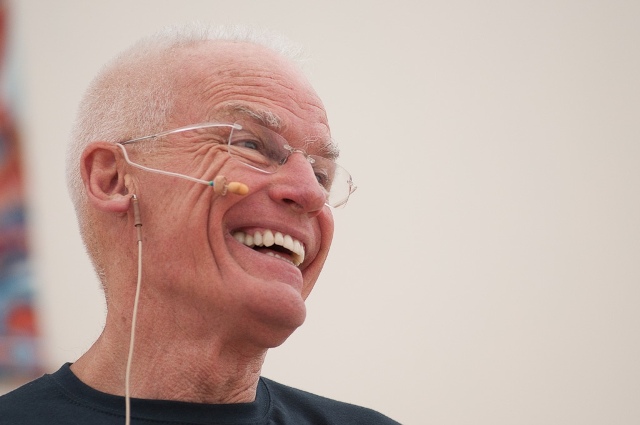
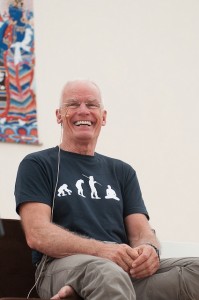
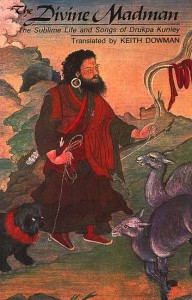

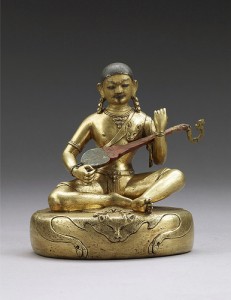
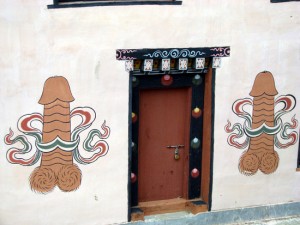
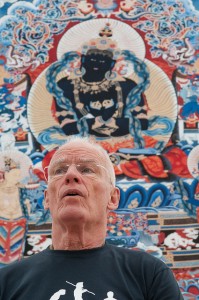



 Follow
Follow
This is excellent, thanks!
Wonderful!!! I love it
As always, Lama Ole inspires. Thank you!